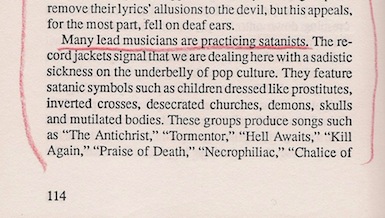Wall of Eyes
Margaret Millar
New York: Dell, 1946
Wall of Eyes is one of Margaret Millar's Canadian novels, by which I mean that it's one of a handful she set in her home and native land. It centres on Toronto's Heath family, a clan that cover copy describes as "decadent" – the word that might first come to mind today is "dysfunctional".
Matriarch Isabel has been dead for some eighteen months, though her influence lingers. Amongst those she's left behind is a cowed, uxorious husband who spends his days holed-up in a third-storey bedroom. Her eldest children, Alice (an aspiring spinster) and John (a heavy-set half-wit with a thing for nightclub singers, dancers and waitresses) are slipping into middle age, yet still haven't left the nest.
Isabel willed the house and every cent of her money to the youngest, Kelsey, a cold and clever girl who is in every way her mother's daughter. Two years earlier, in Isabel's final months, Kelsey lost her sight as the result of a car accident. John was riding in a rumble seat with a cheap date who died at the scene. Kelsey's fiancé, Philip, a middling pianist, survived to play another day.
Philip lives at the Heath residence, but don't get the wrong idea; Kelsey hates her fiancé. As her mother did her father, she's turned her betrothed into an emotional cripple. Oh, every once in awhile Phillip will say he's had enough, but Kelsey knows he's too feeble to ever leave.
Wall of Eyes was Millar's fourth novel and first great commercial success. It's typical of her work: domestic drama and dialogue captivate; psychology, which she studied at the University of Toronto, comes into play. More than one-third of the novel passes before we encounter a body; in this case, poor Kelsey with a wide, deep gash to her breast. "A powerful hand had held the knife, a hand driven by hate or rage."
Kelsey's death brings Detective-Inspector Sands to the Heath residence. A loner, with "no wife or child or friend", he is one of Millar's greatest characters. Sands reappears in what might be her finest novel, The Iron Gates (1945), and the short story "The Couple Next Door" (1954). With him comes glimpses of Toronto's very tame wartime nightclubs, venues that are otherwise almost absent in Canadian literature.
Well... they were tame.
It's always a challenge to write about Margaret Millar – there will be twists and one hates to spoil. So, I'll leave off with a bold pronouncement: This woman, who has never been published in Canada, ranks amongst the very finest Canadian novelists of her generation.
Those familiar with her work know that I'm merely stating the obvious.
Object and Access: The first edition, published by Random House in 1943, is not at all common; five copies are currently listed online, but only one has the dust jacket. At US$95, it is a bargain. Beware of second and third printings.
Copies of the most recent reissue, International Polygonics' 1986 edition, can be had for a buck – others from Lancer and Avon go for not much more. For my money, the Dell edition, with cover by Gerald Gregg, is nicest. Very Good and better copies begin at two dollars and go all the way up to thirty.
Wall of Eyes has been translated, but less than the typical Millar title. Completists will be on the hunt for the Spanish (Muro de ojos, 1986), French (Des yeux plein la tote, 1990), German (Blinde Augen sehen mehr, 1990) and Japanese (眼の壁, 1998) editions.
Margaret Millar is the featured author this week at blogger Patti Abbott's "Friday's Forgotten Books". Lot's of good stuff by regular contributors, including review of The Iron Gates by Patti herself.
My previous Millar (and Millar related) reviews:
Fire Will Freeze
An Air that Kills
An Air that Kills (cover art)
Beast in View
Beast in View (Alfred Hitchcock Presents)
























